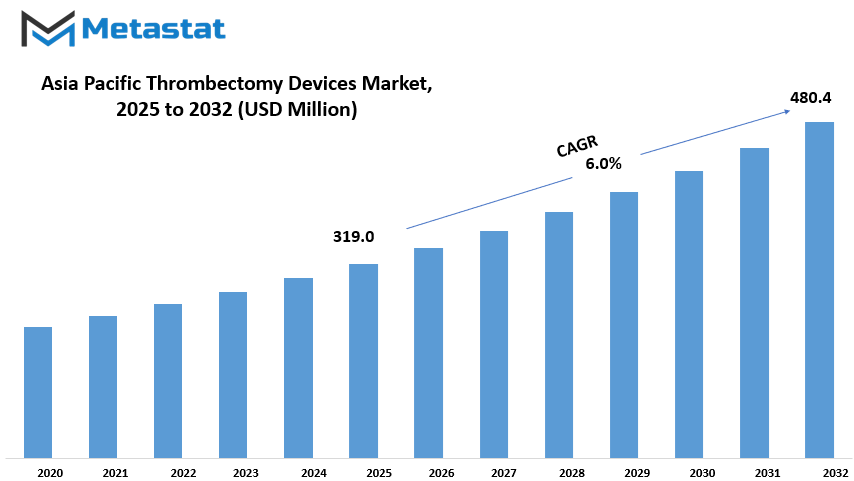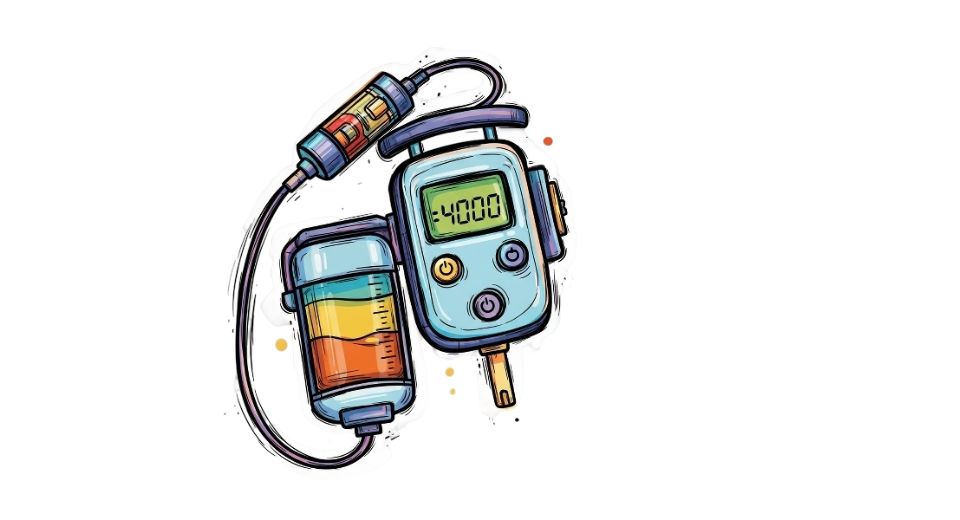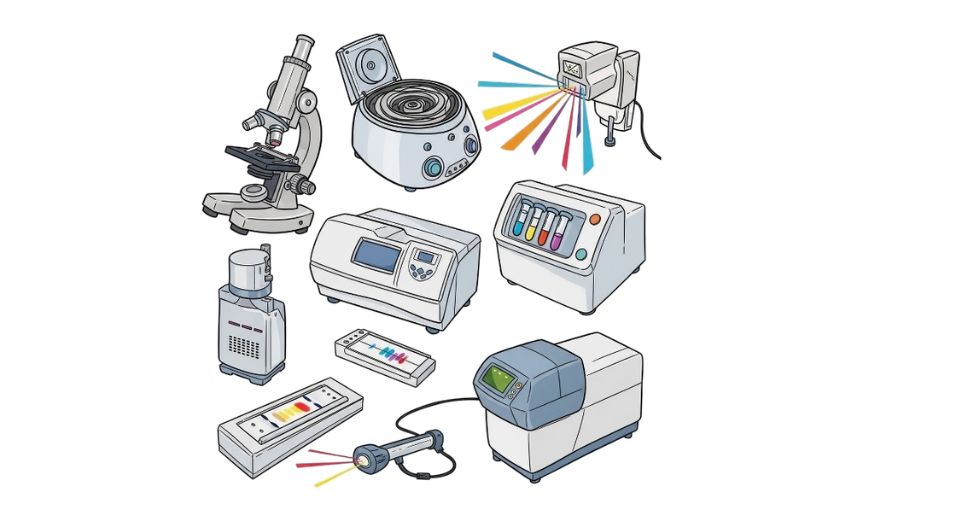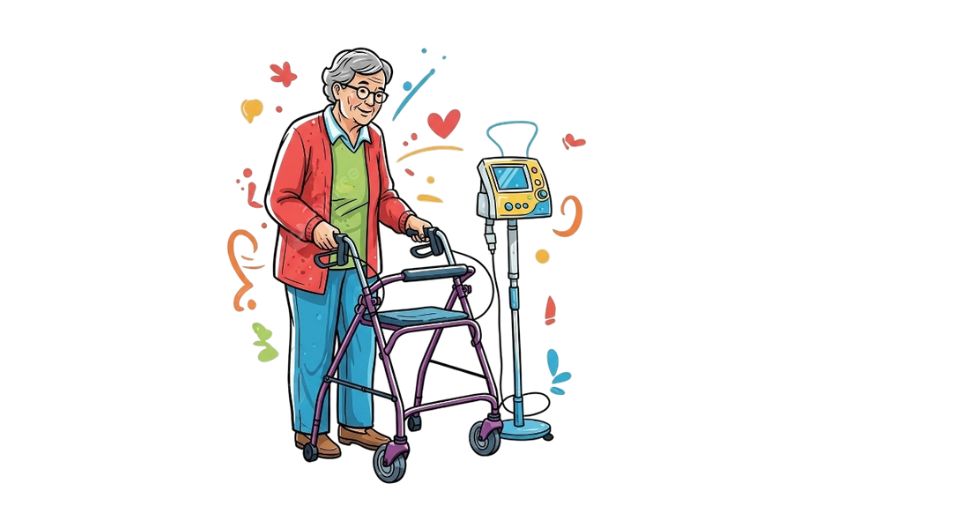MARKET OVERVIEW
The asia pacific thrombectomy devices market will embark on a new trajectory as the industry breaks out of its conventional line of thinking. Historically concentrated on mechanical clot removal from the vasculature, the market will further move towards a dynamic convergence of device development, cross-specialty partnership, and procedure tailoring. This shift will not be limited to surgical innovation but will extend to the network of collaboration among clinicians, researchers, and technology developers who will co-design the future of thrombectomy devices in the region.
In the next few years, the asia pacific thrombectomy devices market will begin exploring new unknowns through more intense collaboration between data scientists and interventionalists. Artificial intelligence won't be secondary support but part of procedural planning and execution. Imaging in real-time and advanced analytics will help doctors make better decisions, reduce procedural risk, and maximize therapeutic outcome. This progress will not only transform the use of thrombectomy devices but will also set up a new benchmark for intervention quality for hospitals and specialty centers in countries such as Japan, South Korea, and Australia.
Standardization of procedures through different healthcare infrastructures in the region is another direction that the industry will go. With great variations in healthcare capabilities from urban to rural settings, manufacturers and healthcare providers will look for versatile devices that perform consistently in diverse settings. Portable and simple systems will become more popular, especially in regions where the availability of highly qualified vascular specialists may be limited. This strategic divergence will also define the asia pacific thrombectomy devices market, not merely by means of innovation, but with inclusivity as well.
Personalization will be another focus area. Device design tailored to patient specificity as a result of anatomical variability across populations will receive the attention. Rather than applying a single-size-fits-all approach, innovators will analyze regional health data to create devices that are customized to various vascular disorders and blood flow regimes. These changes will not only improve procedural outcomes but reduce complications arising from generic device use.
Academic institutions and niche research centers will exert a larger impact on device design with clinical trials that challenge the traditional paradigm. They will go beyond the boundaries of the hospital environment to integrate community-based intelligence and big-data health analytics into the design of next-generation thrombectomy technologies. The asia pacific thrombectomy devices market will come to depend more and more on this rich terrain of evidence-based design, where clinical wisdom intersects with technological expertise.
Second, the focus will move to outcome validation rather than product volume. Hospitals and procurement boards will prioritize devices that demonstrate lower re-thrombosis rates and shorter recovery times. So, the industry has to respond with something greater than improved features. It has to prove effect over time, supported by open data and patient testimony.
What the future holds for the asia pacific thrombectomy devices market is not an easy projection of the current but an imagining anew of how thrombectomy intersects with the larger objectives of vascular well-being. Its future will be shaped by responsiveness, cross-regional cooperation, and a greater dedication to optimizing each step along the care continuum, from diagnosis to post-procedure monitoring.
Asia Pacific thrombectomy devices market is estimated to reach $480.4 Million by 2032; growing at a CAGR of 6.0% from 2025 to 2032.

GROWTH FACTORS
The asia pacific thrombectomy devices market is increasingly gaining popularity due to a growing demand for efficient treatments of cerebrovascular and cardiovascular diseases. As the population grows older, more and more people fall victim to these diseases each year. With this surge in cases, the demand is increasing, and thrombectomy devices are turning out to be one of the more trustworthy alternatives. Another reason the market is expanding is due to the rising demand for minimally invasive procedures. The majority of nations in the region are shifting towards these procedures as they reduce the length of hospital stays, lower the complication rate, and improve the recovery time. This practice not only improves the stature of patients but also the development of the market as a whole.
But with this advancement comes also its own set of challenges. One of the greatest is high device costs of thrombectomy. Equipment is expensive to buy and maintain, and thus, many hospitals and clinics, especially in poor areas, cannot be borne. This worsens the fact that most such places have poor insurance coverage or reimbursement schemes that further limit access to patients. The second issue is the absence of qualified medical staff and lack of advanced health care systems in rural areas of the region. Even when machines are available, lack of trained personnel can make it difficult to use them safely and efficiently.
However, there are surefire signs of progress and promise. Many developing countries in Asia Pacific are trying to improve their health care systems. With more investment flowing into hospitals, medical devices, and training programs, better care is sure to become more widespread. All this will make it easier to introduce thrombectomy procedures in areas that previously lacked such facilities. The technology applied in these devices is also being developed further. Products of the next generation are being designed not only to be better in function but also easier to use. These changes could lead to better results and more widespread use by healthcare professionals.
Overall, despite the asia pacific thrombectomy devices market having a few hurdles to cross, its future is positive. An increasing patient population, mounting need for less invasive treatments, ongoing healthcare spending, and device innovation all point towards strong market potential. Surmounting the current bottlenecks may further unleash growth in the next few years.
MARKET SEGMENTATION
By Type
The asia pacific thrombectomy devices market is progressively increasing, which is inspired by the increasing number of cases of blood clots and technological progresses in medical technologies. Hospitals and healthcare providers are using Thrombectomy processes for rapidly deep vein thrombosis, pulmonary embolism and stroke conditions as they provide rapid recovery and less complications than traditional treatments. Due to this increasing demand, the demand for devices has increased which have the ability to effectively remove blood clots. It is driven by the availability of various types of thrombectomy devices that meet various clinical needs and patient profiles. Of them, Mechanical Thrombectomy Devices are leading the market with a value of $134.8 million, as they are precise and reliable in removing clots. Such machines are often used in cases of emergency like ischemic stroke where quick treatment is necessary to prevent long-term injury.
The asia pacific thrombectomy devices market that work by evacuating the clot through suction, offering an easy but effective method for most doctors. These are often used on peripheral and coronary interventions because they are simple and minimal risk to surrounding tissue. There are then Rheolytic Thrombectomy Devices, which use high-velocity jets of saline to lyse and remove clots. They are most helpful when the clot is denser and older and harder to remove. They avoid the necessity for open surgery and reduce the risk of longer hospitalization. Ultrasonic Thrombectomy Devices offer another option, using sound waves to loosen and remove the clot. These instruments remain increasing in popularity, but their ability to disrupt the clot without causing damage to adjacent tissue makes them a favorable candidate for the future.
Varieties of thrombectomy devices have some benefits that allow medical professionals to choose the best that will be appropriate for the patient's condition. The Asia Pacific region will have more potential to see increased investment in healthcare infrastructure, hence expanded access to such devices. Greater understanding of the importance of early treatment and developments in training and technology will add to further adoption. Since hospitals look for improved patient outcomes and reduced recovery times, market demand will keep growing. This trend points towards a healthy future for the asia pacific thrombectomy devices market with a clear intention of improving the quality of care and accessibility to sophisticated treatments.

By Application
The asia pacific thrombectomy devices market is showing a steady growth, especially when it is considered from the application point of view. The market is divided into deep vein thrombosis (DVT), pulmonary artery embolism (PAE), pulmonary embolism (PE), and arterial fistula/graft (AVF/G). All these segments are important in the context of how Thrombectomy equipment is being used throughout the region. For example, deep vein thrombosis is becoming more common due to the growing population of older people and more sedentary lifestyle. The higher the quantity of sitting on a desk or in travel, the higher the risk of blood clots in deep veins. It increases dependence on effective treatments such as Thrombectomy devices, which serve to unlock these clots before the origin of more serious problems.
The pulmonary artery avatar and pulmonary embolism are synonyms, both refer to obstruction in the lungs that are fatal if it is allowed to address in later times. Thrombectomy devices offer a low aggressive option to open blood vessels, an idea that has made them a more popular option than traditional surgery. Doctors in the Asia Pacific region employ these devices more and more, especially in hospitals where rapid recovery and low risk have immense importance. This growth is inspired by the demand for better emergency care in urban and rural areas.
For the arteries and graft conditions for the arteries, which are common in dialysis patients, the use of Thrombectomy devices is also increasing. These patients develop blood clots that disrupt access points for normal dialysis treatment. Having a tool for rapid and safe clotting is reduced to delay treatment and better overall health results.Hospitals and clinics are looking at the utility of such devices, especially with the increasing number of patients requiring dialysis.
Overall, the Asia Pacific market is likely to grow with high vascular disease awareness and better healthcare infrastructure. More training among medical staff, high access to refined equipment, and high healthcare budgets for countries such as India, China and Japan are all running high use of Thrombectomy equipment. With developing technology and reducing the price of these devices, these devices are likely to be common in private and public health institutions throughout the region.
By End User
The asia pacific thrombectomy devices market is watching a steady growth and is likely to grow in the coming years. One of the major methods of understanding this market is that it should be demolished by the last users. These include hospitals, surgical centers, ambulatory care centers, research labs and educational institutions. These are the leading players in the use and demand of Thrombectomy equipment in all regions.
Hospitals are the largest users of Thrombectomy devices. This is primarily because they are usually the starting point of consultation for patients in acute medical conditions such as stroke or blood clots. In hospitals, infrastructure is essential for infrastructure, special workers and emergency services to complete complex processes such as Thrombectomy. Increasing awareness about high volume and initial treatment of patients also forces hospitals to invest in advanced medical equipment. In most countries of the Asia Pacific region, day -to -day healthcare, healthcare infrastructure improves, using Thrombectomy equipment in hospitals can only increase.
Operation rooms are also heavy users of such equipment. Such operation rooms specialize in specific surgeries and offer a better-controlled environment, which helps reduce recovery time. The majority of patients prefer such rooms for planned procedures. With more such facilities being established across the region, so is their use of advanced devices like thrombectomy equipment.
Ambulatory care facilities are also among the locations where thrombectomy devices are becoming popular. They give instant medical attention without keeping patients in the hospital for months. They are becoming popular in urban areas where people want faster and quicker treatment. Although they cannot perform extremely complex procedures, they do a large number of small procedures and treatments, and that has caused more and more demand for effective devices to be met.
Research facilities and labs, though fewer in number than hospitals and operating rooms, also play a crucial role. These institutions are often the places where new technology is being developed, clinical trials are being run, and the future medical professionals are being educated. They ensure that thrombectomy devices keep improving and conform to new medical needs.
Together, these end users collectively help frame every market in several different ways. As needs for more advanced and quicker treatment persistently increase, demand for thrombectomy devices across these markets will continue to grow steadily throughout the Asia Pacific region.
|
Forecast Period |
2025-2032 |
|
Market Size in 2025 |
$319.0 million |
|
Market Size by 2032 |
$480.4 Million |
|
Growth Rate from 2025 to 2032 |
6.0% |
|
Base Year |
2024 |
COMPETITIVE PLAYERS
The asia pacific thrombectomy devices market is estimated to grow at a consistent pace in the upcoming years, majorly due to the swelling population of patients with cardiovascular and neurovascular diseases. With more patients being diagnosed with ailments such as stroke, pulmonary embolism, and deep vein thrombosis, there is a high demand for medical devices capable of rapidly and safely removing blood clots. Thrombectomy devices restore blood flow by directly eliminating clots from the blood vessels, typically in emergency cases where time is critical. Growing awareness among patients and physicians about the benefits of early clot evacuation has also contributed to growing the use of these devices.
Hospitals and clinics in countries like China, India, Japan, and Australia are finding greater demand for sophisticated surgical tools, especially instruments that can save lives and shorten recovery periods. This has led to greater investment in medical technology from government and private healthcare facilities. In addition, many healthcare workers are being specifically educated on how to utilize thrombectomy devices, and this is therefore maximizing patient outcomes and building trust in the devices. As more and more facilities adopt superior types of treatment, demand for thrombectomy devices will increase even more.
Advances in technology have made the devices safer and easier to use, which encourages more doctors to adopt them into day-to-day practice. Minimally invasive procedures are the first line of choice for most patients since they result in less pain, quicker recovery, and fewer complications. Thrombectomy devices fit well with this approach since they offer a way of treating severe disease without major surgery. As more R&D is done, they will be even more capable, enabling doctors to treat more patients.
There are some companies leading the way with this business. Key players in the asia pacific thrombectomy devices market include Inari Medical, Inc., Medtronic plc, Boston Scientific Corporation, Teleflex Incorporated, Stryker Corporation, Penumbra, Inc., Johnson & Johnson (CERENOVUS), Terumo Corporation (MicroVention, Inc.), Becton, Dickinson and Company (BD), and AngioDynamics, Inc. These companies are involved in optimizing device performance, optimizing product availability, and supporting clinical trials to determine the benefits of their devices. With persistent challenges in patient needs and strong backing from leading companies, the asia pacific thrombectomy devices market will continue to grow in the near future.
Asia Pacific Thrombectomy Devices Market Key Segments:
By Type
- Mechanical Thrombectomy Devices
- Aspiration Thrombectomy Devices
- Rheolytic Thrombectomy Devices
- Ultrasonic Thrombectomy Devices
By Application
- Deep Vein Thrombosis (DTV)
- Pulmonary Artery Embolism (PAE)
- Pulmonary Embolism (PE)
- Arteriovenous Fistula/Graft (AVF/G)
By End User
- Hospitals
- Surgical Centers
- Ambulatory Care Centers
- Research Laboratories & Academic Institutes
By Type
- Mechanical Thrombectomy Devices
- Aspiration Thrombectomy Devices
- Rheolytic Thrombectomy Devices
- Ultrasonic Thrombectomy Devices
Key Asia Pacific Thrombectomy Devices Industry Players
- Inari Medical, Inc.
- Medtronic plc
- Boston Scientific Corporation
- Teleflex Incorporated
- Stryker Corporation
- Penumbra, Inc.
- Johnson & Johnson (CERENOVUS)
- Terumo Corporation (MicroVention, Inc.)
- Becton, Dickinson and Company (BD)
- AngioDynamics, Inc.
WHAT REPORT PROVIDES
- Full in-depth analysis of the parent Industry
- Important changes in market and its dynamics
- Segmentation details of the market
- Former, on-going, and projected market analysis in terms of volume and value
- Assessment of niche industry developments
- Market share analysis
- Key strategies of major players
- Emerging segments and regional growth potential








 US: +1 3023308252
US: +1 3023308252






